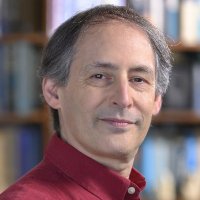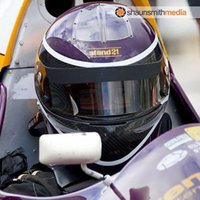
Matt Strassler
@mattstrassler
Theoretical physicist studying particles (mainly at LHC) and strings; interpreting science for the public. Author of "Waves in an Impossible Sea".
ID: 326195345
http://profmattstrassler.com 29-06-2011 14:48:50
4,4K Tweet
13,13K Followers
131 Following

What is a measurement? A tricky question, especially in our #quantum world. As a first step, here's a way to think about it: a sketch of a simple measurement device in a simple quantum setting, one that we can use in future in more complex situations. profmattstrassler.com/2025/02/27/wha…


A #quantum superposition, in which a wave function contains 2 possibilities simultaneously, does not mean that both possibilities occur. It means that one *or* the other may occur; e.g. a quantum particle cannot be observed to go in 2 directions at once. profmattstrassler.com/2025/03/06/can…

Do wave functions describing #quantum objects actually "collapse" (i.e., suddenly change shape and lose pieces) when those objects are measured? Here's how to think about the issue clearly, without getting mired in illogical conundrums and bad arguments. profmattstrassler.com/2025/03/10/do-…

To make sense of the #quantum double slit experiment, one must first learn this strange lesson: in 1920s quantum physics, the interference arises *neither* from particles moving through both slits *nor* from a wave function moving through both slits. profmattstrassler.com/2025/03/13/did…







Here are 9 examples of simple two-particle systems in #quantum superpositions. Some show quantum interference (like double-slit), others don't. Do you see the pattern that distinguishes the two groups? Why & when does interference happen (...or not)? profmattstrassler.com/2025/03/20/qua…

The #quantum double-slit experiment shows an interference pattern; but what is interfering with what? Today I explore examples that show how seemingly minor changes can eliminate interference, and why locating the interference in space is ... problematic. profmattstrassler.com/2025/03/26/qua…

In the #quantum double-slit experiment, it's natural to ask, "where does the interference occur?" But it's a dicey question: an answer is only possible in special situations, as when the particles are independent (i.e. their behavior is "uncorrelated".) profmattstrassler.com/2025/03/28/qua…

If particles are #entangled, observing #quantum interference effects can be subtle, often requiring measuring multiple particles. As a result, quantum interference cannot generally be located in a specific place, unlike interference of e.g. water waves. profmattstrassler.com/2025/03/31/qua…


In the #quantum double slit experiment, the famous #interference pattern disappears if we measure which slit the particle went through. Why does it disappear? It's often described in vague, mystical terms, but in fact it's conceptually straightforward: profmattstrassler.com/2025/04/03/dou…

Have you ever wondered about what's going on with the double slit experiment? If so, you owe it to yourself to read Matt Strassler's brilliant series of blog posts on the topic. I recommend starting here: profmattstrassler.com/2025/02/17/how…

Matt Strassler has some fantastic (highly pedagogical) physics articles. profmattstrassler.com/2025/02/27/wha…

Is Superposition Really an "OR"? If a quantum system is in a superposition state "A+B", does it mean that "A AND B" are true, or that "A OR B " is true, or something else? An example of why ordinary language is not easily applied to #quantum physics. profmattstrassler.com/2025/04/14/is-…
